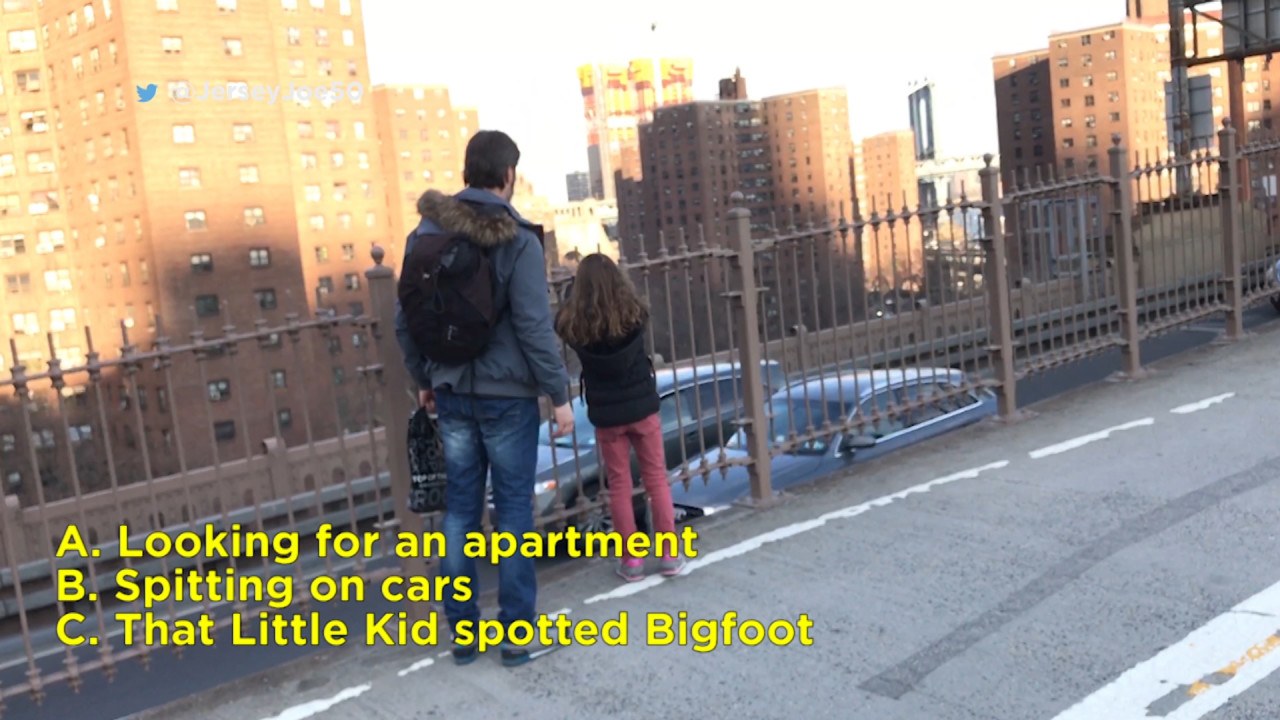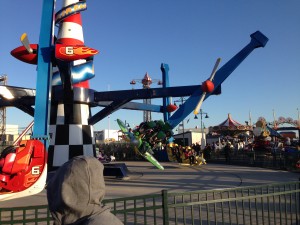Imagine sitting in a theater, enjoying a live performance one second, and then having to run for your life from fire and smoke the next. Thankfully due to modern advances in fire technology and strict building codes, these types of experiences don’t happen that often. But, almost a century and a half ago; a thousand theater goers in Brooklyn had their lives placed in jeopardy and sadly almost 300 of them didn’t make it out.
The Brooklyn Theater opened on October 2, 1871 near Washington and Johnson streets in Brooklyn, New York. Being located close to ferries and mass transportation to Manhattan, the theater was able to bring in big name productions and actors, and featured packed houses on most nights. One of the area’s most elegant and successful theaters, the design featured seating on three levels. Each seating level was partitioned off from the others and featured their own separate entrances, so patrons could not socialize with or sneak into the lower levels with more expensive seats. The parquet and parquet circle seating was on the ground level with seating for 600. The dress circle, which also housed the second level balcony, had seating for 450. The family circle, which featured the cheapest seats, was located on the third level with seating for 450 and had its own ticket booth.
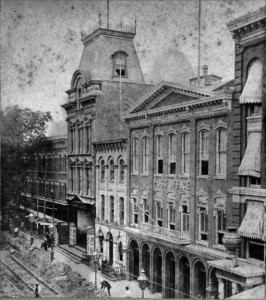
Brooklyn Theater before the fire.
On Tuesday, December 5, 1876, about a thousand theater goers were watching a live production of The Two Orphans, a French show, which was a popular show touring theaters at the time. It was around 11pm and the play had paused for an intermission between the fourth and fifth acts. The orchestra was playing and the curtain was down. The cast had taken their positions.
As the curtain rose, the stage manager noticed a small fire off to the left side of the stage. The fire was coming from a large drop curtain which contained a background image for another scene. Part of the drop had become detached and touched one of the stage’s gas lights and was ignited.
Before electricity, theaters used gas lights to illuminate the stage. Each gas light featured a screen that was designed to keep anything away from the flame. Strict rules governed who could ignite the lights and everything was controlled at a gas table, which is similar to today’s light boards. The table would feature valves that could be opened and closed to increase or lower the flames that would brighten or dim the lights. The lights would be lit there by remote by causing a small spark from a flint (just like your gas stove).
The stage manager noticed the flame and called for stagehands to put it out. While there was a fire hose and water buckets available, both were obscured by sets for Julius Caesar, that were stacked on the side of the stage waiting to be shipped out. Nobody could get to the flames quickly enough and the fire grew.
The curtain goes up and the actors begin the scene, while the crew tried to stay off stage and battle the growing fire. The actors spoke their lines and the crowd became aware of the situation as embers rained down on the stage as stagehands now began to beat the flames out with large poles. It didn’t work.
The actors then fell out of character and tried to calm the crowd. Many were already heading for the exits. As the actors and even the stage manager took the stage to try and calm the panic, a large piece of flaming wood landed in front of one of the cast and it caused people to panic even more.
Some of the cast evacuated the stage and exited the side stage doors onto Johnson Street. A few ran through a secret corridor that ran from their dressing rooms to the ticket office. While two others, returned to their dressing room to grab their coats and became trapped as the flames quickly engulfed the stage.
The head usher tried to open the fire doors at the rear of the lower auditorium, but couldn’t as the doors were locked and rarely opened, leaving the lock was corroded. Eventually, he was able to force the doors open and more people escaped. However, this new inflow of air caused the flames to spread even faster, now out to the seating area.
The second floor patrons jammed their single staircase exit to a near halt. There was a second exit on that level, but it too was locked and no one ever made it upstairs to open it. Several people tried to escape that way, but were forced to turn around and head back to the crowd.
The 400 people that were seating in the third level family circle found themselves, not having to worry so much about the flames at first, but the thick black smoke that quickly filled their level. They only had a single staircase as an exit that featured three stairways and a second floor landing. The panicked crowd immediately jammed that stairs, with the smoke and flames right behind them. Eventually, the gas lights in the hallway went out, leaving this exit a dark jammed mess. People fell and many were trampled in the confusion, while those still at the top began to asphyxiate from the smoke. More than half of the patrons sitting on this level succumbed to the smoke in a matter of minutes.
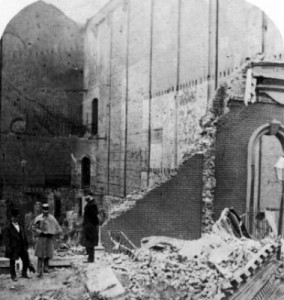
Brooklyn Theater after the fire and collapse.
The Brooklyn fire company arrived at 11:26pm, but the flames were already out of control. The chief decided to try and contain the fire and save the neighboring buildings, instead of just putting in out. The fireman entered the lobby and assisted who they could to get out. They entered the family circle stairs, but didn’t make it far as they stairs were filled with thick black smoke. The auditorium was now fully engulfed in flames. Those who were still inside never had a chance. They did a quick check of the second level, where there were no signs of life. Whoever had made it out in those few minutes were alive, the hundreds that did not … were gone.
At about 11:45, cracks began to form in the walls and the building collapsed causing the flames to grow even more. The fire company was able to bring it under control by 3am.
The official report is that 278 people perished in the fire. It is currently the third highest amount of fatalities among fire that have occurred in public buildings and theaters in the United States.
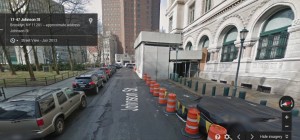
A 2013 Google Maps shot of the area, showing a very different Johnson Street and park.
Today, nothing remains of the theater site. Another performance house opened as well as a newspaper on the site, but the entire area was razed in the mid 20th century to create Cadman Plaza. A monument in the park honors those lives lost.
Buildings today are constructed to much stricter codes that require fire doors to remain unlocked, add plentiful fire hoses, hydrants, and alarms. I was once seeing a movie at The Waterfront in Pittsburgh one night and the fire alarm went off and we were forced to evacuate the theater. I remember staring at the screen, being focused deep in the film. Suddenly, the movie quickly went off and two white strobe lights kicked on directly underneath. It took a second for the house lights to come up. It was a disorienting experience and it took me a moment to understand what was going on. In fact, I really didn’t until an automated announcement over the intercom to evacuate. But, I can understand how seconds can come into play during a life or death situation, especially involving a fire.
This story also reminds me of the Station Nightclub fire that happened in Warwick, Rhode Island back in 2003. The entire incident was caught on tape by a news crew, when pyrotechnics caught the stage on fire and burned the entire building in just over 5 minutes. 100 people sadly perished.

Monument to the victims of the Brooklyn Theater fire.
THE 411
What: Brooklyn Theater Fire
Date: December 5, 1876
Location: Brooklyn, New York
JERSEY JOE RECOMMENDS:
I found this story surfing the internet one night and it made me stop and think. It’s always a good idea, just to take 2 seconds, and look for the closest exit when you’re at a theater. While evacuations and incidents are rare, it’s just a good idea to know where to go if you must quickly exit. In fact, that’s just a good policy in general. We have disaster drills at work every few months that are mandated by the FDNY that teach us where to go and the several different options we have to exit. Our fire alarm malfunctions every day, but I’m confident that in an emergency, I know several different ways out.
